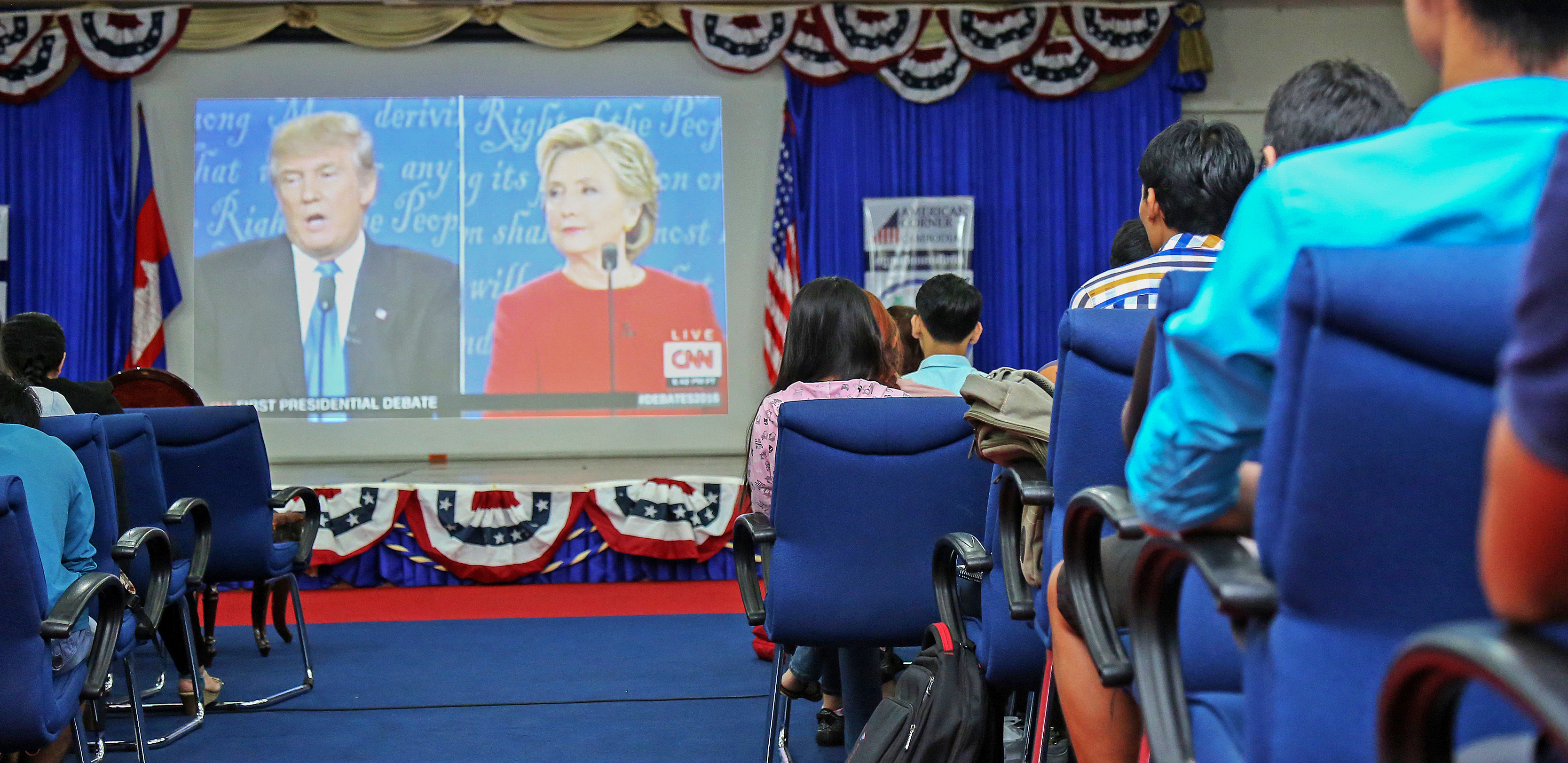People who viewed the presidential debates between Donald Trump and Hillary Clinton knew more about the candidates’ positions following the debates, a new study has found. In addition, watching the post-debate television coverage enhanced viewers’ knowledge.
These findings, by researchers at the Annenberg Public Policy Center (APPC) of the University of Pennsylvania, came from studying levels of knowledge among debate viewers before and after the first and third 2016 general election presidential debates between Republican Donald Trump and Democrat Hillary Clinton.
“Consistent with past research, people are learning from watching the debates,” said Ken Winneg, managing director of survey research at APPC and lead author of the study, which was conducted with APPC director Kathleen Hall Jamieson. “You are more likely to increase your knowledge about the candidates on the issues if you watch the debate and then stick around to watch the post-debate coverage afterwards or the next morning.”

The study, “Learning from the 2016 U.S. General Election Presidential Debates,” was posted online in April in advance of its publication in American Behavioral Scientist.
The first general election presidential debate, on September 26, 2016, was the most-viewed in U.S. history, drawing an estimated 84 million TV viewers, according to Nielsen. The third and final debate, on October 19, 2016, attracted nearly 72 million viewers, the third-highest audience. Millions more viewed the debates online or via social media.
What debate viewers did and didn’t learn
The study found:
- A “significant and positive knowledge gain” for viewers of the first debate on issues identified by the researchers in advance as likely to be discussed, with the largest gain on the question of which candidate “favors increasing taxes on the wealthiest Americans.” The percentage of viewers who knew that the correct answer (Clinton) increased from 60 percent before the debate to 86 percent afterward.
- The smallest knowledge gain in the first debate (18 percent before to 23 percent after) was on the candidates’ “murkier” positions on the Trans-Pacific Partnership, or TPP. (Neither supported it.) In the debate, Trump said Clinton called TPP the “gold standard” of trade deals – which she had, previously, as Secretary of State, before subsequently opposing it.
- The TPP “gold standard” exchange was the third most-broadcast video clip from the debate in the following day’s cable-news and morning-show coverage, according to the Internet Archive. The survey found a significant increase in the number of people who thought, incorrectly, that Clinton supported the TPP (from 38 percent to 51 percent) – a possible effect of Trump highlighting her past position.
- In the third debate, the question showing the greatest increase in viewer knowledge was on which candidate’s plans would increase the national debt more (Trump), from 34 percent to 47 percent.
- Two questions with significant changes in the number who knew the right answer were ones in which the correct information was part of the question posed by the moderator, which suggests the value of the moderator “embedding clear accurate information in the questions themselves.”
- Watching post-debate coverage was a strong predictor of learning. While education may account for some of the knowledge gain from the debates, “the data suggest that following post-debate coverage acted to enhance knowledge.”
Who’s qualified to be president and who’s a threat?
Viewers were asked their opinion on each candidates’ qualifications to be president and whether the candidates would, if elected, be a threat to the nation’s well-being:
- Asked which major party candidate was qualified to be president, Clinton was favored over Trump by a 2-1 margin before the debates. The debates did little to change that.
- Asked if either candidate would threaten the nation’s well-being if elected, half of the respondents said Clinton and two-thirds said Trump. The debates had no significant effect on those assessments.
Methodology
The data come from APPC’s 2016 Presidential Debate Study, a four-wave national online panel. For the first debate, market research firm GfK, under contract to APPC, surveyed 6,115 eligible respondents from its Knowledge Panel. Of those people, 5,145 (84 percent) reported watching the debate and completed the post-debate survey. And of those who completed the survey, nearly half (2,520) were randomly exposed to the knowledge questions before and after the debate. For the third debate, 6,323 eligible respondents from GfK’s Knowledge Panel were surveyed, of whom 5,241 (83 percent) said they watched the third debate and completed the post-debate survey. Of those, nearly half (2,546) were exposed to the knowledge questions before and after the third debate. The margin of error for the groups that completed the post-debate surveys (5,145 and 5,241 people) is ±1.6 percent; the margin of error for the half-samples of those groups is ± 2.3 percent. For more on the methodology, see the study.
To download this release, click here .

